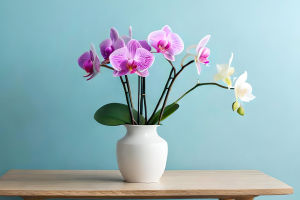Saffron, often referred to as "red gold," is one of the most precious and expensive spices in the world. Derived from the flower Crocus sativus, saffron threads are actually the dried stigmas of this beautiful purple flower.
Prized for its distinctive flavor, vibrant color, and medicinal properties, saffron has been used for thousands of years in culinary dishes, traditional medicine, and even as a dye.
The History of Saffron
The history of saffron stretches back over 3,000 years. Ancient civilizations such as the Egyptians, Greeks, and Romans treasured saffron not only for its culinary uses but also for its medicinal and cosmetic properties. Cleopatra, it is said, used saffron in her baths to enhance beauty, while Roman emperors used it to fragrance their baths and public halls.
Saffron also played a role in ancient trade, and its cultivation spread from the Middle East to Europe, India, and beyond. Even today, countries like Spain, and India remain the largest producers of saffron, considered some of the finest in the world.
How is Saffron Harvested?
Saffron's high price comes from the labor-intensive process of harvesting. Each Crocus sativus flower produces only three stigmas, and these delicate threads must be carefully handpicked. It takes around 75,000 flowers to produce just one pound of saffron! After the stigmas are harvested, they are dried to create the saffron threads used in cooking and medicine.
The saffron plant blooms for only a short period each autumn, and harvesting is often done early in the morning to ensure the threads retain their color, flavor, and potency.
Culinary Uses of Saffron
Saffron is renowned for its ability to impart a rich golden hue and a slightly sweet, floral flavor to dishes. It is a staple in many cuisines, especially in Mediterranean, Indian, and Middle Eastern cooking. Some of the most famous saffron dishes include:
Paella: This traditional Spanish dish often features saffron to enhance the flavor and color of the rice.
Risotto alla Milanese: A classic Italian risotto made with saffron, giving it a beautiful golden color.
Bouillabaisse: A French seafood stew that includes saffron as a key ingredient for its distinctive taste.
Biryani: A flavorful Indian rice dish where saffron is used to infuse color and aroma into the dish.
Persian Saffron Rice: A simple yet elegant rice dish often served with Persian meals, using saffron to give the rice its vibrant yellow color.
Medicinal Benefits of Saffron
Saffron has long been used in traditional medicine for its health-promoting properties. Modern research has confirmed many of these benefits. Some of the key health benefits of saffron include:
Mood Booster: Saffron is known for its mood-enhancing properties and has been studied as a potential treatment for mild depression and anxiety.
Antioxidant Power: Saffron is rich in antioxidants, which help protect cells from damage caused by free radicals, potentially reducing the risk of chronic diseases.
Improves Heart Health: Some studies suggest that saffron may improve cholesterol levels and help regulate blood pressure, supporting overall heart health.
Enhances Cognitive Function: Saffron has been shown to improve memory and cognitive function, and some research suggests it may have potential benefits in preventing or slowing the progression of Alzheimer's disease.
Supports Eye Health: Saffron contains compounds that may protect the eyes from age-related macular degeneration and promote overall vision health.
Anti-inflammatory and Anti-cancer Properties: The active compounds in saffron, including crocin and safranal, exhibit anti-inflammatory and potential anti-cancer effects, although more research is needed in these areas.
Saffron in Beauty and Wellness
In addition to its culinary and medicinal uses, saffron is valued in the beauty industry for its potential skin-enhancing properties. It's often used in skincare products to brighten complexion, reduce pigmentation, and soothe irritated skin. DIY face masks using saffron and milk have been a traditional beauty secret in many cultures for centuries.
Fun Facts About Saffron
Saffron has been traded and used for over 4,000 years, making it one of the oldest cultivated spices in history.
In ancient Greece, saffron was used as a sleep aid and was believed to ward off bad spirits.
The spice has a distinctive aroma, often described as honey-like with earthy, grassy notes.
Saffron’s deep color comes from the presence of crocin, a powerful antioxidant.
Conclusion
So, Lykkers, Saffron is truly a gem of the spice world, offering a unique combination of culinary, medicinal, and beauty benefits. Though expensive, a little saffron goes a long way in transforming dishes with its rich flavor and vibrant color. Its long history, coupled with its potent health benefits, ensures that saffron will continue to be cherished by cultures worldwide for centuries to come.
How to grow the most expensive spice in the world
Video by Gardening Australia


